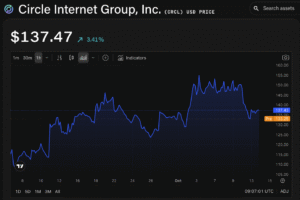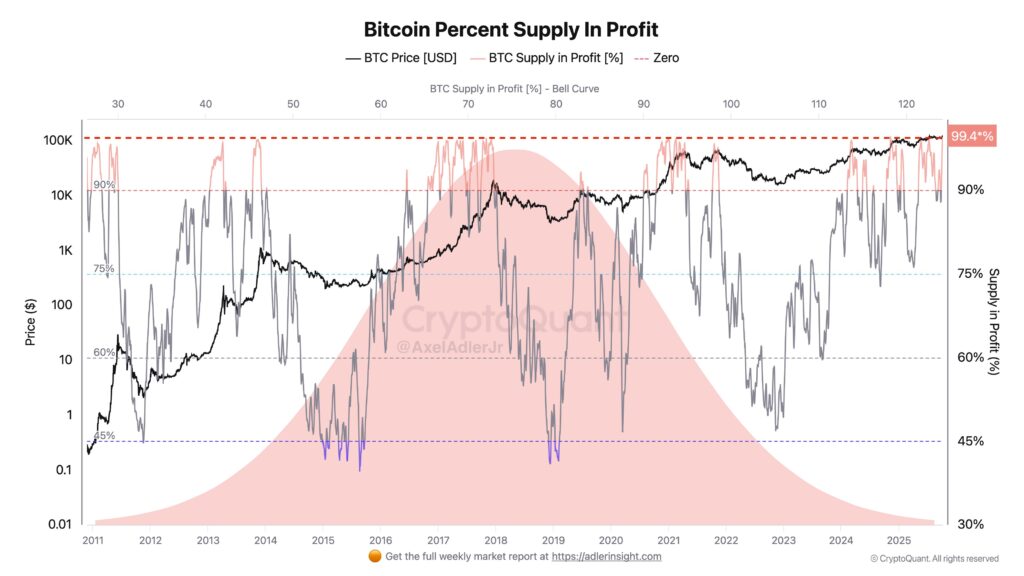Understanding the Recent Crypto Market Crash: Causes and Implications
The cryptocurrency market witnessed a significant downturn on Wednesday, with the overall market capitalization plummeting to approximately $4.1 trillion—a drop exceeding 2.5% within just 24 hours. Concurrently, the Crypto Market Fear & Greed Index experienced a noticeable shift, plummeting from a score of 70 (indicating greed) to 60, further reflecting a decrease in investor sentiment. The sharp fluctuations in market dynamics have stirred widespread concern among traders and investors alike.
Bitcoin and Ethereum: The Biggest Losers
Bitcoin (BTC), the flagship cryptocurrency, has seen a notable decline as massive profit booking took precedence. It fell over 4%, sliding down to $121,257 from an all-time high (ATH) of $126,200. Ethereum (ETH) also faced notable adversity, experiencing a 7% drop to $4,436, as it recorded higher liquidation rates than Bitcoin over the past 24 hours. These shifts are emblematic of euphoria phases, where the overwhelming profitability often prompts traders to cash in, leading to an escalation in market risk.
Top altcoins such as XRP, Solana (SOL), Cardano (ADA), and Hyperliquid (HYPE) also followed suit, experiencing losses ranging from 5% to 10%. Meme coins like Dogecoin (DOGE) and Pepe Coin (PEPE) plunged over 7%, while Shiba Inu (SHIB) battled to maintain its position amid a 5% decline. Notably, lesser-known coins like DoubleZero (2Z) and Plasma (XPL) suffered significant drops, nearing 19% and 13%, respectively.
Profit Booking Fuels the Crash
The immediate trigger of this crypto market crash can be attributed to widespread profit-taking by high-leverage traders. A surge in ETF inflows coupled with increased demand for both spot and derivative trading spurred on-chain activity, resulting in 99.5% of holders realizing profits. Meanwhile, unrealized profits for short-term holders surged to 10%, a precursor to significant selling pressure.
Data from on-chain analysts indicates that the spike in open interest for Bitcoin and Ethereum during this latest rally mirrors setups seen back in December, shortly before a 30% market crash, further reinforcing market apprehension. Additionally, long-term holders and whales are increasingly liquidating their positions; for example, a notable transaction involved a Bitcoin OG depositing 3,000 BTC to Hyperliquid in pursuit of USDC, having already sold 960 BTC for around $116 million.
Liquidations Skyrocket
The recent volatility in the crypto market resulted in approximately $700 million in liquidations, with data from Coinglass indicating that around $550 million in long positions and $150 million in short positions were wiped out in the last 24 hours alone. The scale of liquidations represents a deepening crisis, with more than 180,000 traders affected during this tumultuous period. Notably, a significant liquidation event marked the biggest single order of BTC-USDT swaps, amounting to $8.74 million.
Major coins like ETH, BTC, SOL, XRP, DOGE, XPL, WLFI, ASTER, BNB, AVAX, and HYPE were all impacted, reflecting a broad ripple effect across the market. The lack of a buy-the-dip phenomenon further exacerbated this massive liquidation, spotlighting the growing anxiety hovering over the crypto landscape, which previously exhibited bullish momentum.
Market Influences: The FOMC Minutes
The timing of this market crash aligns closely with external economic factors, particularly the anticipation surrounding the upcoming Federal Open Market Committee (FOMC) minutes and comments from key Federal Reserve officials, including Jerome Powell. As the yield on the 10-year U.S. Treasury hovered around 4.13%, a dip in previous sessions set the stage for potential rate adjustments. The market is braced for a possible 25 basis point rate cut in the near future.
Simultaneously, the U.S. Dollar Index (DXY) has been climbing, approaching the 99 mark—its highest value in two months. This upswing, coinciding with fears about an impending U.S. government shutdown and broader global uncertainties, has prompted a flight toward safe-haven assets. This overarching economic climate adds another layer of complexity to the cryptocurrency market, which thrives on investor confidence and market stability.
Outlook for Investors
The current pullback is pivotal as it tests the market’s outlook and engages players around support levels. Experts suggest that where buyers re-emerge will play a critical role in shaping the market’s direction moving forward. Analysts remain cautiously optimistic, with some predicting that Bitcoin could reach new all-time highs of $135,000 in the long term, contingent upon a favorable rebound and market conditions stabilizing.
As investors navigate through this turbulent period, understanding the trends and triggers shaping market dynamics becomes increasingly essential. The interplay between profit-booking behavior, market sentiment, external economic factors, and technological advancements in the crypto space will ultimately dictate the trajectory of the market. Staying informed and vigilant will be crucial for participants looking to strategically position themselves in this rapidly evolving environment.
In conclusion, while the current market climate presents challenges, it also provides opportunities for keen investors ready to reassess their strategies in light of the ongoing trends and potential for recovery. The journey ahead may be fraught with volatility, but a well-informed approach can yield significant returns in the long term.
















